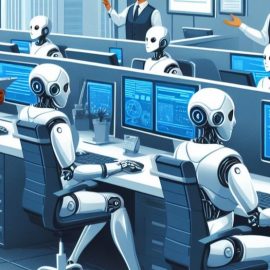

This article is an excerpt from the Shortform book guide to "Creativity, Inc." by Ed Catmull. Shortform has the world's best summaries and analyses of books you should be reading.
Like this article? Sign up for a free trial here .
What was the Pixar Imaging Computer? How did it fit into the original Pixar business model?
Pixar wasn’t always focused on animation and movies. In the beginning, the Pixar Imaging Computer was an important part of the company even though it struggled.
Keep reading for more about the Pixar Imaging Computer and what happened to it.
The Early Structure of Pixar
At the beginning of its life as an independent company, Pixar struggled financially and was torn between its identity as a computer company selling products and an animation studio producing films. Jobs had never marketed high-tech machines like the Pixar Imaging Computer, and neither Catmull nor his colleagues had ever run a company before. Catmull tried to better his managerial skills by reading books but found most of them to be shallow and useless.
In the beginning of its time as an organization, Pixar was just as focused on selling the Pixar Imaging Computer as it was on creating animated films. In an attempt to run the product division effectively, Catmull sought advice from his friends in Silicon Valley. Unfortunately, this advice turned out to be ineffective and, sometimes, actively hurt the company, and Catmull learned there are no simple answers to complex problems.
For example, when considering how he should price the Pixar Imaging Computer, he turned to the presidents of Sun and Silicon Graphics. They suggested that he start with a high number, arguing that it was easier to bring the price down than to raise it. However, when Catmull took their advice and asked for $122,000 per unit, they failed to move products. Even when they lowered the price, Pixar was stuck with the stigma of being “overpriced.”
The Japanese Manufacturing Model
As Catmull struggled with Pixar’s early growing pains, he turned to an unlikely source for inspiration: the Japanese manufacturing industry. Following WWII, the Japanese manufacturing industry was struggling as a result of a shattered economy. In contrast, American manufacturing was booming. For efficiency, assembly lines were used to create products, stopping only when management deemed it necessary. However, while this kept things moving, it caused a lot of problems with quality assurance and required a team of inspectors to watch for faulty products.
To boost their productivity, Japanese companies started adopting the American system with one key adjustment: The line could be stopped by any employee at any time. This created an environment where problems were addressed at the source rather than after the fact.
Before long, Japanese manufacturing productivity skyrocketed, surpassing many American companies. Catmull appreciated this model because it encouraged innovation and open communication. When building Pixar, he allowed all of his employees to address issues at any time, even if it meant pausing a project. It gave his employees a sense of ownership over the process and helped build effective practices.
Abandoning Sales of the Pixar Imaging Computer
Despite Catmull’s best efforts, Pixar was still in the red. Though they had a fair amount of success as an animation studio (their early films earned them two Academy Award nominations and one win), they only managed to sell 300 computers. The sales didn’t cover the cost of building and developing the hardware.
With this in mind, Catmull decided to stop selling hardware. The team was much more passionate about filmmaking, and removing the costs of creating hardware would save them significant amounts of money. The problem, however, was that they now had no source of significant income without the Pixar Imaging Computer. The short films they were making may have garnered awards and praise, but they didn’t bring in box office money.
Between 1987-1991, tensions between Catmull and Jobs intensified. Jobs was frustrated with Catmull’s inability to produce a profit, and Catmull was tired of Jobs’s demanding and pretentious attitude. Jobs, having sunk tens of millions into Pixar, tried to sell the animation studio three times. Generous offers came from Microsoft, Alias, and Silicon Graphics, but Jobs never took the sale. Catmull believes this was because the offers made Jobs see the value of Pixar. For example, if Microsoft was willing to offer $90 million, Pixar must have significant value.

———End of Preview———
Like what you just read? Read the rest of the world's best book summary and analysis of Ed Catmull's "Creativity, Inc." at Shortform .
Here's what you'll find in our full Creativity, Inc. summary :
- How Pixar went from selling computers to successful animation studio
- What it takes to build a creative workplace culture
- Why George Lucas sold Pixar to Steve Jobs






